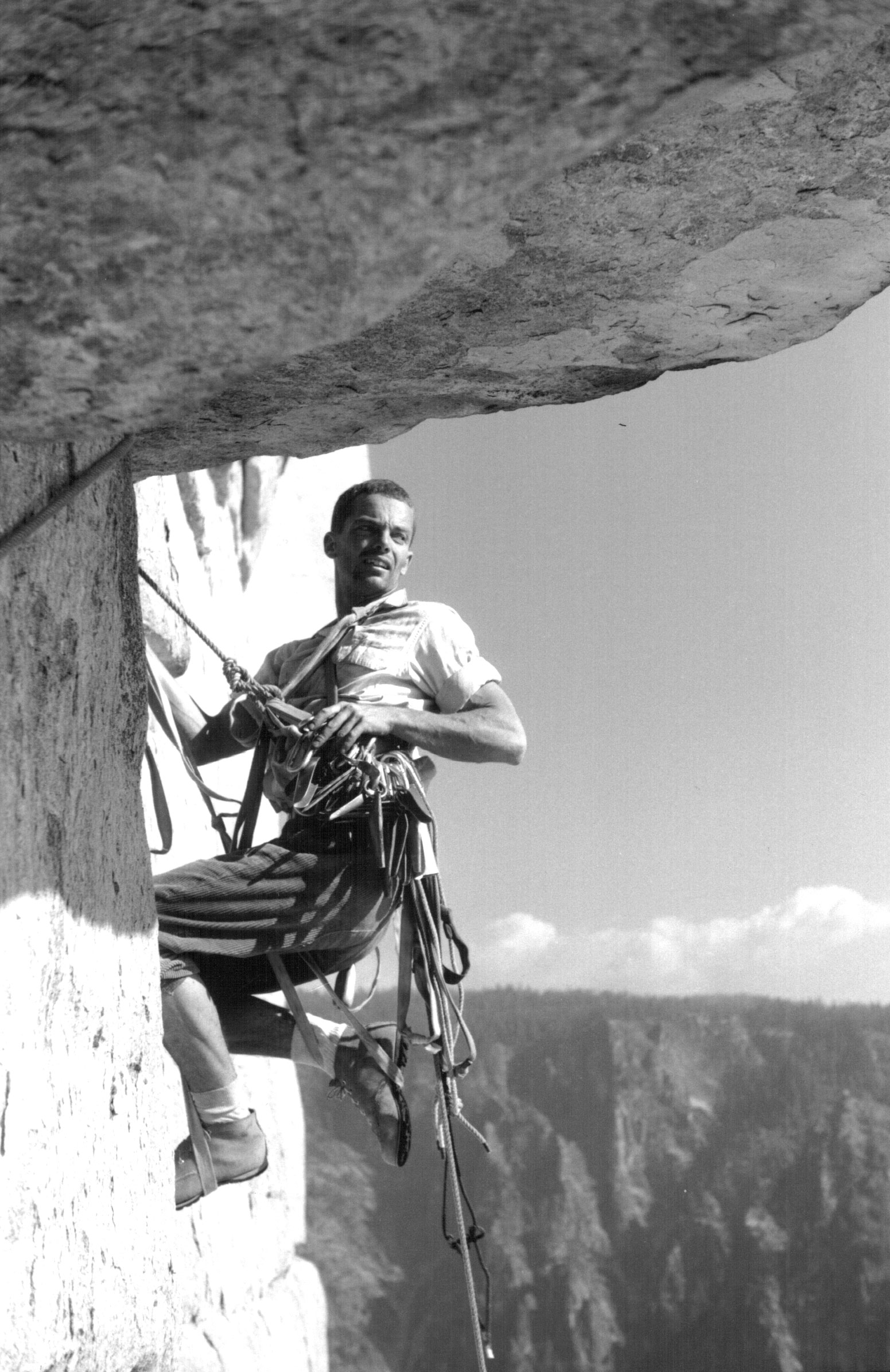|
Roper
writes about the natural features of the Salathé Wall
climb:
“Most impressive of all were two awesome, and
connected, sections near the top: a
tiered ceiling they simply called the Roof and the overhanging wall just
above, dubbed the Headwall. These
two sections didn’t need complex names; they are classics of the
genre. The ceiling jutted
out perhaps twelve feet, yet the tiers contained hidden but near-perfect
cracks, and Frost nailed this quickly.
Above lay a 150-foot headwall, tilted five degrees beyond the
vertical. Bottomed and
flared cracks shot up this sober and grainy expanse, but pitons
nevertheless stuck long enough for upward progress.
The exposure defied description.
An object let loose from here will spin free for about 400 feet
before brushing the near-vertical cliff below.
Seconds later it will kiss the wall two or three times before
exploding into the forest, 2,000 feet below.”
(Steve Roper, Camp 4)
We had spotted the Salathé
Roof, and the single crack running up the Headwall, during our
reconnaissance from El Cap Meadow several days before beginning the
climb. It looked
spectacular, even from the ground. But
the full force of the exposure Roper describes did not reveal itself
until we started out into that spacey place.
It was an experience of a lifetime.
HEADWALL ROOF, Tom leads
pitch 29, the Salathé Wall, El Capitan,
Yosemite National Park, California.
First ascent by Royal
Robbins, Chuck Pratt, and Tom Frost, 9˝ days, September 1961.
|
